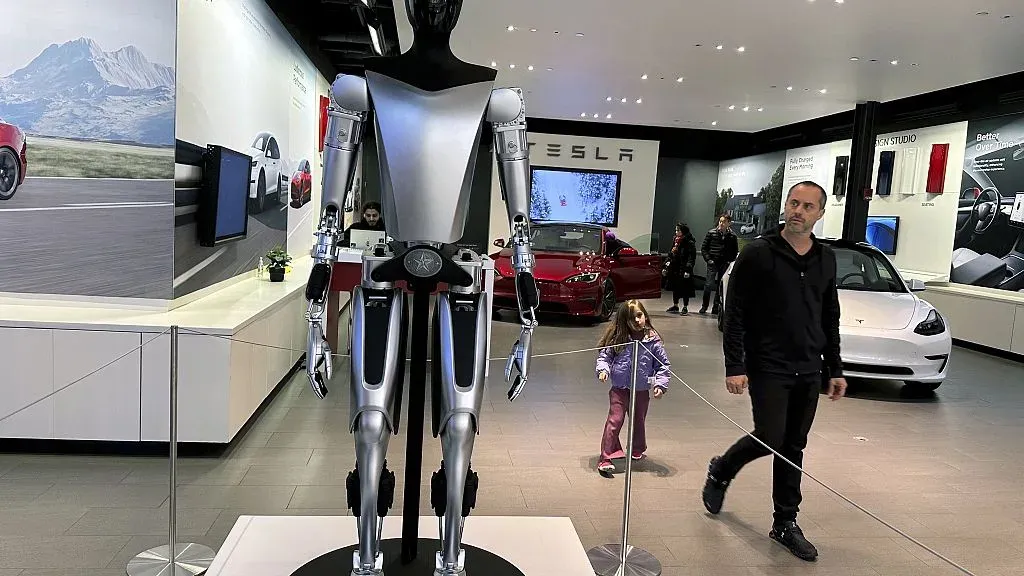Tesla Optimus Robot Gen 3: Hey there! Have you heard the latest buzz in the tech world? Tesla is pushing boundaries once again with its groundbreaking humanoid robot, Optimus. But that’s not all – Elon Musk just dropped a bombshell announcement: Tesla Optimus will soon integrate with Neuralink, his brain-computer interface company.
Imagine controlling robots with your thoughts, empowering individuals with disabilities like never before, and forging a seamless bond between humans and artificial intelligence. This isn’t some distant future; it’s happening now, and it’s set to revolutionize our lives.
In this article, we’re diving deep into these exciting developments in the tech industry. We’ll explore how this cutting-edge technology will impact your daily life, from practical applications to futuristic possibilities. So, stick with us as we unpack everything you need to know about Tesla Optimus and Neuralink. Trust us, you won’t want to miss a word!
- Shocking Truth: Tesla’s Robotaxi Might Bankrupt Elon Musk!
- AI Powered Humanoid Robots: Why Nvidia, Tesla, Amazon And More Are Betting Big
- Tesla Optimus Robot Gen 2: A $10,000 Humanoid Robot Revolutionizing the Workforce
- AI News and Update: AGI Leaps, Brain Chips, & Miss AI 2024
Tesla Optimus Robot Gen 3 + Neuralink: A Match Made in Tech Heaven
In the near future, it may be commonplace to see individuals conversing with their humanoid robot companions. The ratio of robots to humans is expected to rise significantly, with each person potentially owning multiple Optimus units. This demand stems from the immense utility these robots offer, providing hundreds of thousands of dollars worth of value annually while costing only a fraction of that price. Tesla plans to make Optimus affordable, with options for purchasing or renting, making this technology accessible to the masses.
The most astonishing revelation, however, is the ability to communicate with Optimus through thoughts. Elon Musk’s vision involves individuals expressing themselves through the robot’s voice. This feature could be a game-changer for those with speech difficulties, allowing them to communicate effortlessly through Optimus. The robot would be equipped with a sound system and speakers in its head, enabling it to vocalize thoughts translated from brain signals.

The Potential for Superpowers and Restoring Functionalities
Beyond communication, Musk envisions a future where Optimus parts can be integrated into patients who have lost limbs. Neuralink’s brain implants could enable individuals to control these robotic limbs with their thoughts, providing them with “cybernetic superpowers.” This technology would not only restore lost functionalities but could potentially offer enhanced abilities compared to biological limbs.
Imagine a pianist with robotic arms capable of playing with unmatched speed and precision. This merging of humans and machines could revolutionize industries and redefine our understanding of physical limitations.
Optimus: The Robot You Control with Your Mind
Neuralink’s success in its first human brain implant trial has paved the way for mind-controlled robots. Elon Musk confirmed that users will be able to command Optimus telepathically through Neuralink. This opens up a realm of possibilities, where everyday tasks like controlling lights, adjusting temperatures, and even ordering groceries can be accomplished with mere thoughts. Optimus could evolve into a personal assistant, managing schedules, replying to emails, and reminding you of important tasks – all through the power of your mind.
— Neuralink (@neuralink) July 10, 2024 | Application | Task | Potential Benefits |
| Daily Tasks | Controlling lights, adjusting thermostat | Enhanced convenience, improved accessibility |
| Personal Assistant | Managing schedule, replying to emails | Increased productivity, time savings |
| Healthcare | Assisting individuals with disabilities | Greater independence, improved quality of life |
Neuralink update! https://t.co/7kKRs4mxyB
— Elon Musk (@elonmusk) July 10, 2024Neuralink’s Second Human Trial
While the integration of Optimus with Neuralink’s second human trial is still in its early stages, the preparations are underway. Elon Musk mentioned that the second patient is expected to receive the implant soon. This trial will test a newer Neuralink device with potentially double the bandwidth of the previous version. The company aims to improve surgical efficiency and implant design, paving the way for broader testing and future advancements.
The Future of Neuralink and Optimus
Elon Musk’s vision for Neuralink and Optimus goes far beyond medical applications. He envisions a world where this technology gives people “cybernetic superpowers” and mitigates risks to human civilization. In the short term, Neuralink aims to treat neurological diseases and enhance human capabilities. In the long run, the goal is to achieve a symbiotic relationship between humans and AI, leading to unprecedented advancements.
Conclusion
The integration of Tesla Optimus with Neuralink represents a monumental leap in technological innovation. The prospect of controlling robots with our thoughts, giving superpowers to those with disabilities, and transforming industries is both awe-inspiring and thought-provoking. While this technology is still in its early stages, the potential for positive impact is undeniable. As Tesla continues to push the boundaries of what is possible, we can anticipate a future where humans and machines work together to create a better world.
- Nvidia Stock Split Impact: 10 Investor Takeaways & Nvidia’s Explosive Earnings
- Google celebrity AI chatbot: Metis vs. ChatGPT | OpenAI’s Multi Acquisition
- Kyutai’s Moshi: The AI That Talks, Thinks, and Feels – Beats GPT4o!
- 👀 Why iOS 18 Beta 3 Could Be The MOST IMPORTANT iPhone Update EVER!
FAQ Related To Tesla Optimus Robot Gen 3 + Neuralink
Neuralink is committed to ensuring the safety and efficacy of its implants. They are conducting rigorous testing and working with regulatory agencies to ensure the technology meets all safety standards.
Tesla aims to start mass production of Optimus next year. However, the availability for individual purchase will depend on various factors, including production capacity and regulatory approvals.
While the potential benefits are significant, integrating humans and AI raises ethical and societal concerns. These include issues of privacy, autonomy, and the potential for misuse of technology. Ongoing discussions and careful consideration are necessary to address these challenges.









